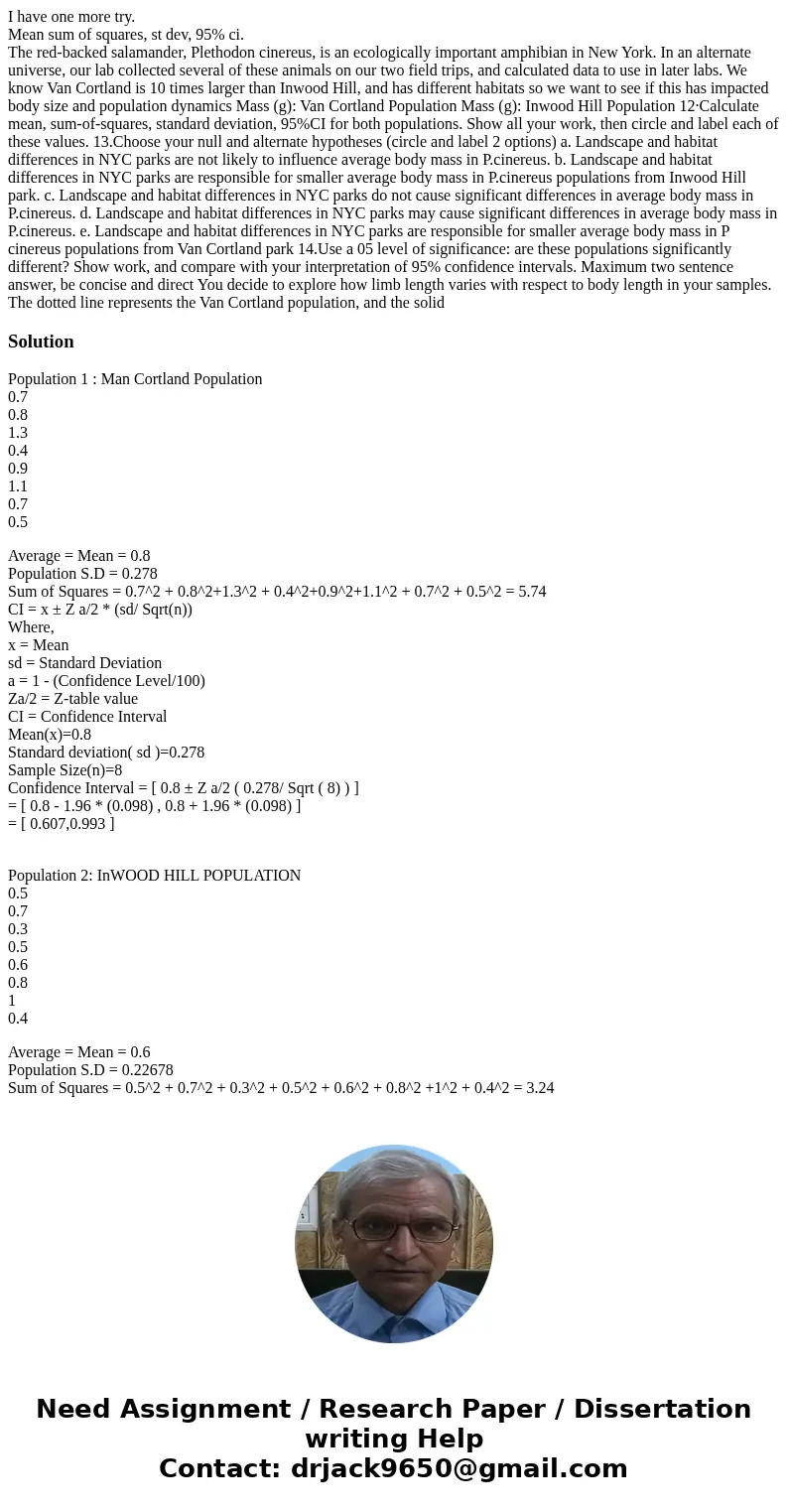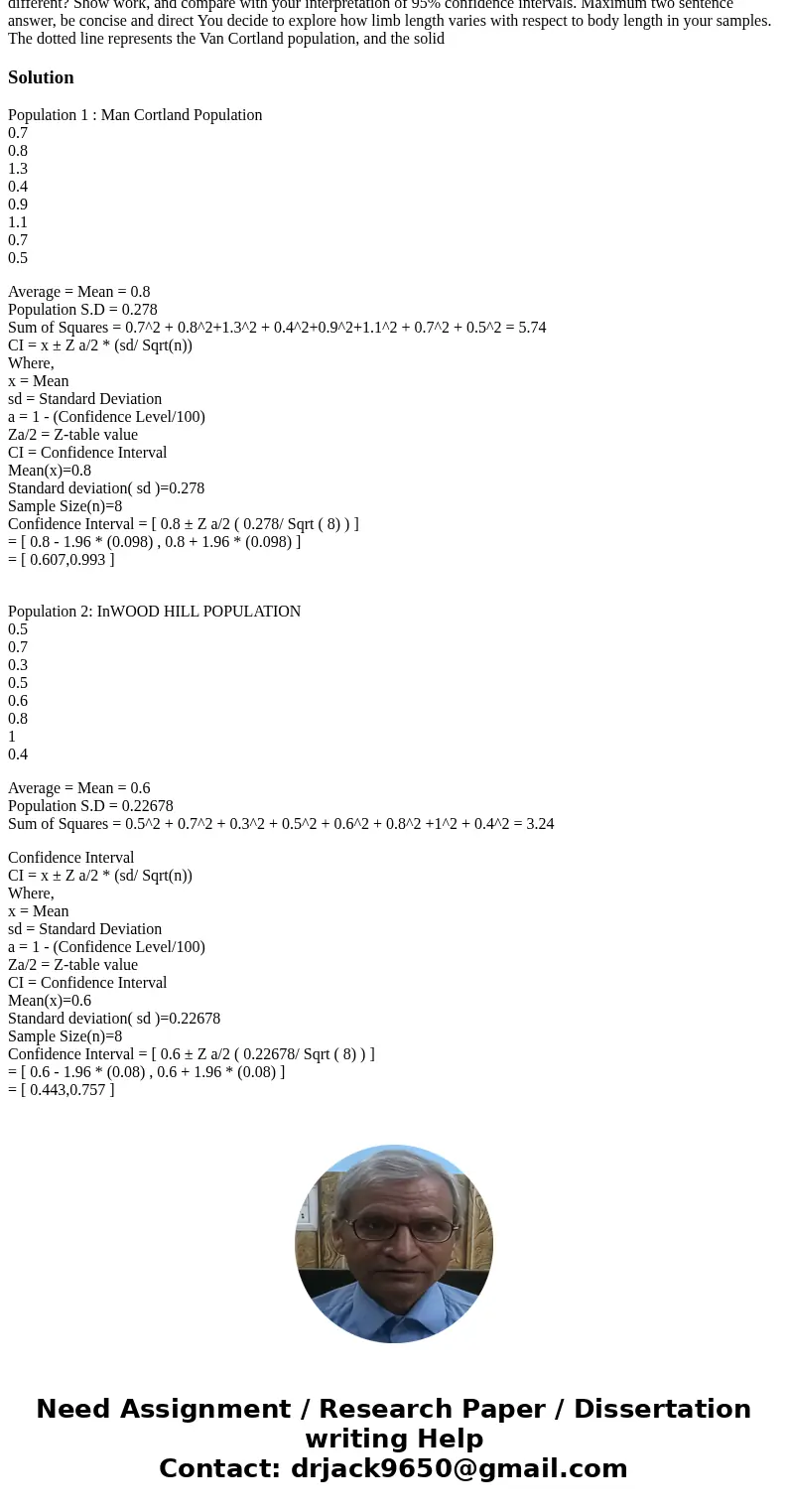I have one more try.
Mean sum of squares, st dev, 95% ci.
The red-backed salamander, Plethodon cinereus, is an ecologically important amphibian in New York. In an alternate universe, our lab collected several of these animals on our two field trips, and calculated data to use in later labs. We know Van Cortland is 10 times larger than Inwood Hill, and has different habitats so we want to see if this has impacted body size and population dynamics Mass (g): Van Cortland Population Mass (g): Inwood Hill Population 12·Calculate mean, sum-of-squares, standard deviation, 95%CI for both populations. Show all your work, then circle and label each of these values. 13.Choose your null and alternate hypotheses (circle and label 2 options) a. Landscape and habitat differences in NYC parks are not likely to influence average body mass in P.cinereus. b. Landscape and habitat differences in NYC parks are responsible for smaller average body mass in P.cinereus populations from Inwood Hill park. c. Landscape and habitat differences in NYC parks do not cause significant differences in average body mass in P.cinereus. d. Landscape and habitat differences in NYC parks may cause significant differences in average body mass in P.cinereus. e. Landscape and habitat differences in NYC parks are responsible for smaller average body mass in P cinereus populations from Van Cortland park 14.Use a 05 level of significance: are these populations significantly different? Show work, and compare with your interpretation of 95% confidence intervals. Maximum two sentence answer, be concise and direct You decide to explore how limb length varies with respect to body length in your samples. The dotted line represents the Van Cortland population, and the solid
Population 1 : Man Cortland Population
0.7
0.8
1.3
0.4
0.9
1.1
0.7
0.5
Average = Mean = 0.8
Population S.D = 0.278
Sum of Squares = 0.7^2 + 0.8^2+1.3^2 + 0.4^2+0.9^2+1.1^2 + 0.7^2 + 0.5^2 = 5.74
CI = x ± Z a/2 * (sd/ Sqrt(n))
Where,
x = Mean
sd = Standard Deviation
a = 1 - (Confidence Level/100)
Za/2 = Z-table value
CI = Confidence Interval
Mean(x)=0.8
Standard deviation( sd )=0.278
Sample Size(n)=8
Confidence Interval = [ 0.8 ± Z a/2 ( 0.278/ Sqrt ( 8) ) ]
= [ 0.8 - 1.96 * (0.098) , 0.8 + 1.96 * (0.098) ]
= [ 0.607,0.993 ]
Population 2: InWOOD HILL POPULATION
0.5
0.7
0.3
0.5
0.6
0.8
1
0.4
Average = Mean = 0.6
Population S.D = 0.22678
Sum of Squares = 0.5^2 + 0.7^2 + 0.3^2 + 0.5^2 + 0.6^2 + 0.8^2 +1^2 + 0.4^2 = 3.24
Confidence Interval
CI = x ± Z a/2 * (sd/ Sqrt(n))
Where,
x = Mean
sd = Standard Deviation
a = 1 - (Confidence Level/100)
Za/2 = Z-table value
CI = Confidence Interval
Mean(x)=0.6
Standard deviation( sd )=0.22678
Sample Size(n)=8
Confidence Interval = [ 0.6 ± Z a/2 ( 0.22678/ Sqrt ( 8) ) ]
= [ 0.6 - 1.96 * (0.08) , 0.6 + 1.96 * (0.08) ]
= [ 0.443,0.757 ]


 Homework Sourse
Homework Sourse